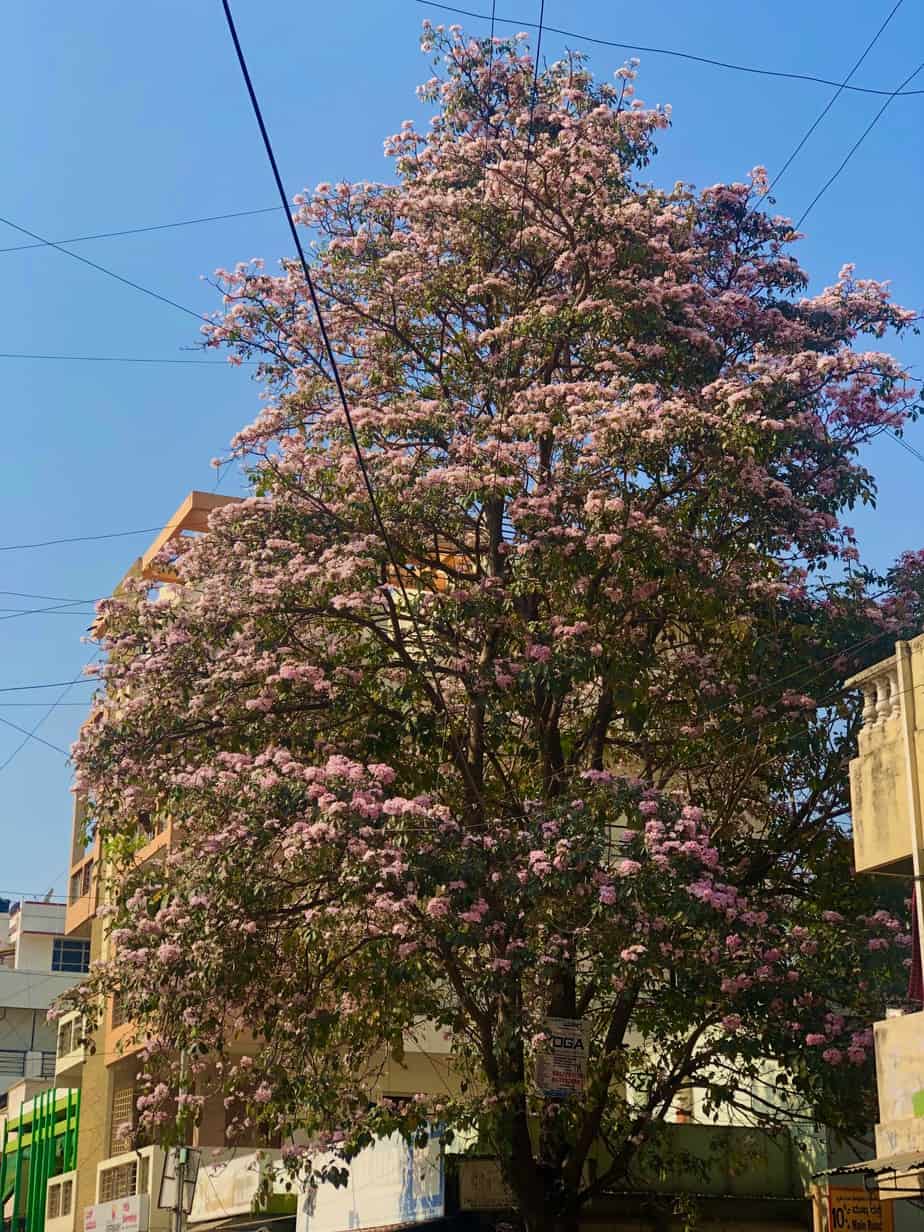Credit: Naveeen Thomas Prasad
Silk Board. Marathahalli. Outer Ring Road. What comes to your mind? Awful traffic jams, long commute and whatnot. Most of us avoid this route as much as possible, but many office-goers have no option.
Recently, Naveen Thomas Prasad, an IT employee, noticed something beautiful on his way back from work – Tabebuia Rosea trees in full bloom, lined up on the ORR between Marathahalli and Silk Board Junction. He decided to capture it on camera.
On capturing the pink bloom!?
Naveen says he’s always been spellbound by nature’s scenic beauty and how it can heal the mind. “Bengalureans say Silk board is nerve-wracking, and no one wants to go there. But the trees in full bloom are visually pleasing,’’ he says. He wanted to share it with others so that they realise how nature can change the vibe of a place.
“These small things, which we often leave unnoticed and unadmired, can bring us joy.” He hopes we will have more trees and a cleaner Bengaluru that can help retain its ‘Garden City’ tag.
Things you didn’t know about Tabebuia Rosea
Many mistakenly call Tabebuia Rosea ‘Cherry Blossom trees’ because of its pink flowers. But trees of the genus Tabebuia are native to large parts of South and Central America. Tabebuia Rosea is a species in this genus, found from Mexico up to Venezuela and Ecuador.
It has been planted quite extensively in Bengaluru as an avenue tree and also in some parks and residential colonies, says Sudarshan Nityananda, a Trustee of the NGO Bangalore Environment Trust. Following is some information Nityananda shared on these trees.
Tabebuia Rosea is a tree of hot climates and can grow to a height of 30 m, with a trunk girth of 3 m. It is mainly known for its spectacular display of pink to whitish-pink, trumpet-shaped flowers, that feel papery. In its native land, the bark is sometimes used as a powder or decoction to cure a range of ailments. The flowers are seen mainly in spring, between February and April. In the non-flowering season, this tree can be identified by its leaves that are arranged like the fingers of a human hand – palmately compound.
Though Tabebuaia is not a Jacaranda tree, it belongs to the same family – Bignoniaceae.

A Tabebuia Rosea tree in full bloom on a Bengaluru street. Pic: Pavithra S
Where else to spot these trees?
Magnificent displays of Tabebuia Rosea can be seen on the ORR near Silk Board Junction, and all around the Jayanagar 4th Block Complex. Some specimens are also seen on BTM 29th Main, Madiwala Lake Road, and its side streets.
| Did you know? Some 25 Tabebuia Rosea trees on Bannerghatta Road, outside the Indian Institute of Management, were translocated inside the campus when Namma Metro construction was started. |
Bengaluru has many specimens of the yellow-flowered Tabebuia Aurea too, which is a much smaller tree, rather crooked in shape. These trees set Cubbon Park, Jayanagar, Palace Road and Sankey Road, all aflame with yellow in the right season.
Cubbon Park is also famous for its display of the purple Tabebuia Avellanadae which flowers in winter. Many of these trees are also seen in the central open space opposite the Seshadri Memorial Library.
Also Read:
- Bengaluru’s exotic, giant trees: Here’s where and how you can spot them
- Is it African Tulip or Akasha Mallige? Here’s a guide to tree-spotting in Jayanagar
[This article was compiled by Ekta Sawant, based on inputs from Sudarshan Nityananda and Naveen Thomas Prasad]